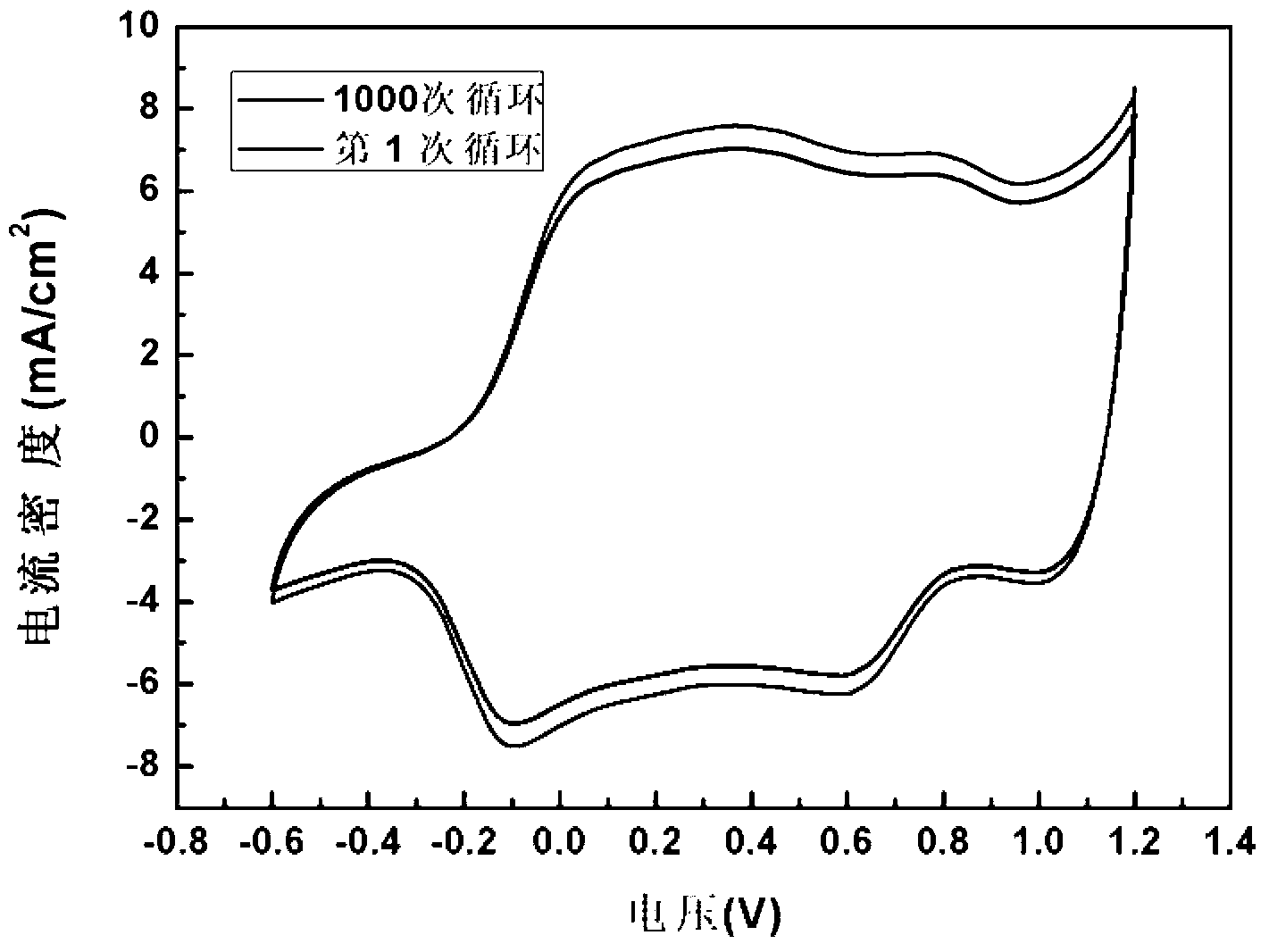Preparation method of nickel oxide/polyaniline composite electrochromic film
An electrochromic and polyaniline technology, which is applied in the field of preparation of nickel oxide/polyaniline composite electrochromic films, achieves the effects of overcoming poor optical properties, poor chemical stability, and simple preparation methods
- Summary
- Abstract
- Description
- Claims
- Application Information
AI Technical Summary
Problems solved by technology
Method used
Image
Examples
Embodiment 1
[0026] The FTO conductive glass was sequentially immersed in deionized water, acetone and ethanol for ultrasonic cleaning for 20 minutes, and dried for later use. Weigh 0.62g of nickel acetate tetrahydrate and 0.31g of potassium persulfate and dissolve them in 46mL of water. After they are completely dissolved, add 3mL of concentrated ammonia water dropwise to obtain a reaction solution. In the kettle, keep warm at 180°C for 6 hours, and finally cool down to room temperature naturally, take out the FTO conductive glass, wash it with water and ethanol in sequence, dry it, and calcinate it at 500°C for 3 hours to obtain the FTO conductive glass with NiO layer; weigh 0.93g aniline monomer is dissolved in the sulfuric acid solution of 200mL0.5mol / L to obtain deposition liquid, will put the FTO conductive glass with NiO layer obtained above into deposition liquid as working electrode, with platinum plate as counter electrode, in 0.05mA / cm 2 The nickel oxide / polyaniline composite e...
Embodiment 2
[0028] The FTO conductive glass was sequentially immersed in deionized water, acetone and ethanol for ultrasonic cleaning for 30 minutes, and dried for later use. Weigh 0.37g of nickel acetate tetrahydrate and 0.185g of potassium persulfate and dissolve them in 47.2mL of water. After they are completely dissolved, add 1.8mL of concentrated ammonia water dropwise to obtain a reaction solution. In a hydrothermal kettle, keep warm at 160°C for 12 hours, and finally cool down to room temperature naturally, take out the FTO conductive glass, wash it with water and ethanol in sequence, dry it, and calcinate it at 400°C for 6 hours to obtain the FTO conductive glass with NiO layer; Weigh 1.86g of aniline monomer and dissolve it in 200mL1mol / L sulfuric acid solution to obtain a deposition solution, put the FTO conductive glass with a NiO layer obtained above into the deposition solution as a working electrode, and use a platinum sheet as a counter electrode. 0.1mA / cm 2 The nickel oxi...
Embodiment 3
[0030]The FTO conductive glass was sequentially immersed in deionized water, acetone and ethanol for ultrasonic cleaning for 25 minutes, and dried for later use. Weigh 0.62g of nickel acetate tetrahydrate and 0.31g of potassium persulfate and dissolve them in 46mL of water. After they are completely dissolved, add 3mL of concentrated ammonia water dropwise to obtain a reaction solution. In the kettle, keep warm at 170°C for 8 hours, and finally cool down to room temperature naturally, take out the FTO conductive glass, wash with water and ethanol in turn, dry, and calcinate at 600°C for 2 hours to obtain the FTO conductive glass with NiO layer; weigh 0.93g aniline monomer is dissolved in the sulfuric acid solution of 200mL0.5mol / L to obtain deposition liquid, will put the FTO conductive glass with NiO layer obtained above into deposition liquid as working electrode, with platinum plate as counter electrode, in 0.5mA / cm 2 The nickel oxide / polyaniline composite electrochromic f...
PUM
 Login to View More
Login to View More Abstract
Description
Claims
Application Information
 Login to View More
Login to View More - R&D
- Intellectual Property
- Life Sciences
- Materials
- Tech Scout
- Unparalleled Data Quality
- Higher Quality Content
- 60% Fewer Hallucinations
Browse by: Latest US Patents, China's latest patents, Technical Efficacy Thesaurus, Application Domain, Technology Topic, Popular Technical Reports.
© 2025 PatSnap. All rights reserved.Legal|Privacy policy|Modern Slavery Act Transparency Statement|Sitemap|About US| Contact US: help@patsnap.com



